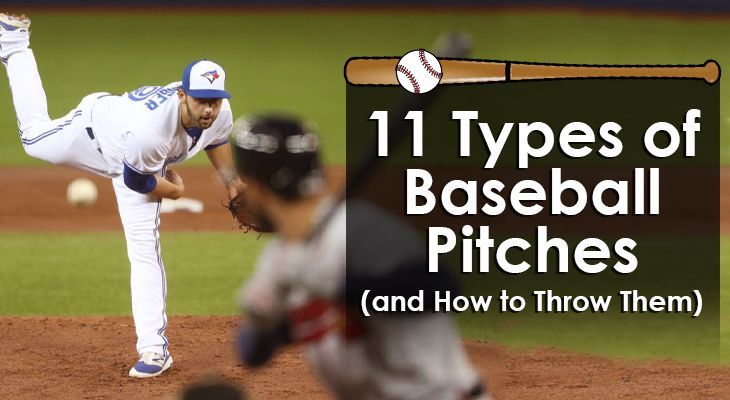Becoming a successful baseball pitcher isn't just about stepping on the mound and throwing the ball as hard as you can.
As anyone who plays the sport knows, a pitcher needs to be able to throw both hard (in most cases) and accurate baseball pitches.
Depending on the situation of the game, a pitcher may want to throw a pitch inside, outside, high, or low. Being able to locate pitches where he wants is key to being a great pitcher.
The position becomes more complicated, though, when you consider that pitchers don't just throw a straight ball to the catcher.
Pitchers have to learn and master multiple kinds of pitches.
Some baseball pitches are hard and straight, some are softer with certain breaks to them, while some are much slower but are disguised as a straight, hard pitch.
Being able to switch the pitches you throw allows you to keep batters off balance as a pitcher, which is the key to getting swing-and-misses or inducing only soft contact from hitters.
Here are the 11 most common baseball pitches and how to throw them.
11 Baseball Pitches
1. The Fastball
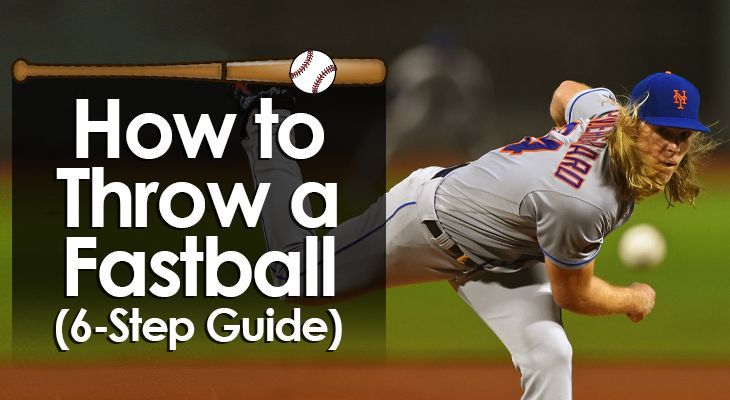
A fastball is the most direct pitch.
It's thrown hard and direct toward the plate.
It's the first pitch that all pitchers need to master before they should move onto adding other baseball pitches to their repertoire.
There are two main types of fastballs:
1. A four-seam fastball
2. A two-seam fastball
The former is often thrown much harder, while the latter has much more movement and is often easier to control.
The biggest difference between the two types of fastballs is the grip.
For a four-seamer, you put your index and middle fingers across the seams on the ball where they come together to form a horseshoe-like shape.
Your pinky and ring fingers should be placed relatively close together on the ball, and your thumb should rest gently underneath the ball.
For a two-seamer, the only change is where you are going to position your index and middle fingers.
For this pitch, you want to put those fingers at the point on the ball where the seams are close together. Your fingers should follow the seams instead of crossing them.
When you release the ball, you don't want to twist or snap your wrist or fingers in any way. Just allow the ball to come straight out of your hands, with the ball rolling from the base to the tip of your fingers.
>> Click here for my full post on throwing the "Fastball" <<
2. The Changeup
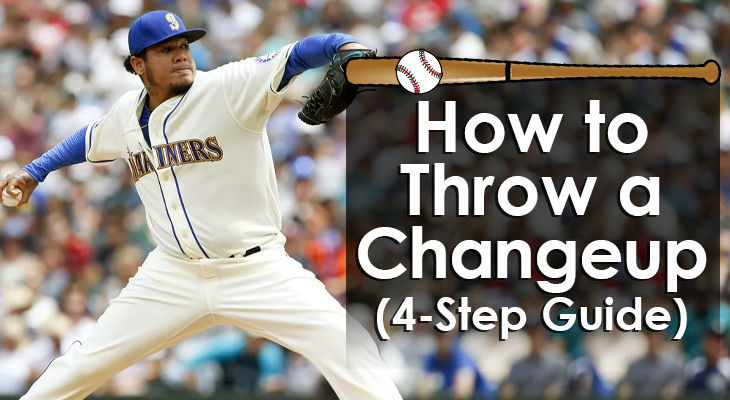
A changeup is the second baseball pitch that most learn how to throw.
It's meant to trick batters into thinking you are throwing a fastball. But this pitch will come out much slower than a fastball and will have much more movement on it.
The most common way to throw a changeup is to the three-finger changeup.
To grip this pitch, put your ring, middle and index fingers centered on the top of the ball. Then, put your pinkie and thumb under the soft leather section of the ball.
Unlike with a fastball, the ball should sit back in the palm of your hand with a changeup. This will cause more friction with your hand, which will naturally slow down the pitch.
You want to throw this pitch just like a fastball. Don't slow down your arm movement or your delivery at all. How you are holding the baseball will cause it to naturally slow down.
You can also throw a circle changeup.
For this, put your middle, ring and pinkie fingers centered on the top of the ball. Your index finger and thumb should put placed on the backside of the ball. Then, curve your index finger down so it touches your thumb at the knuckle -- creating a circle.
The final variation is called a palmball or four finger changeup.
For this pitch, put the ball all the way in the back of your palm. Then, wrap your four fingers around it, with your ring and index fingers on the sides of the ball, and your thumb directly below the ball.
>> Click here for my full post on throwing the "Changeup" <<
3. The Curveball

A curveball is the simplest breaking pitch.
It's the second most common pitch thrown in baseball, next to the fastball.
This pitch will dive down and to the side as it approaches the plate. It will not only break but will also be slower than a fastball.
To grip a basic curveball, you put your middle finger near the bottom seam on the ball, with your thumb along the seam on the back.
Your index finger can be kept off the ball at this point. It'll be used to point where you want the ball to go instead of actually gripping the ball.
When you release the ball, you should snap it out of your hand from top to bottom. Your middle finger and thumb should rotate down in the process. Know that the ball will end up wherever your index finger is pointed.
A 10-4 curveball will travel from 10:00 to 4:00 on the clock if you're a left-handed pitcher. If you want to throw a 12-6 curveball, all you have to do is aim a little higher and snap your fingers in a straight downward motion.
>> Click here for my full post on throwing the "Curveball" <<
4. The Slider
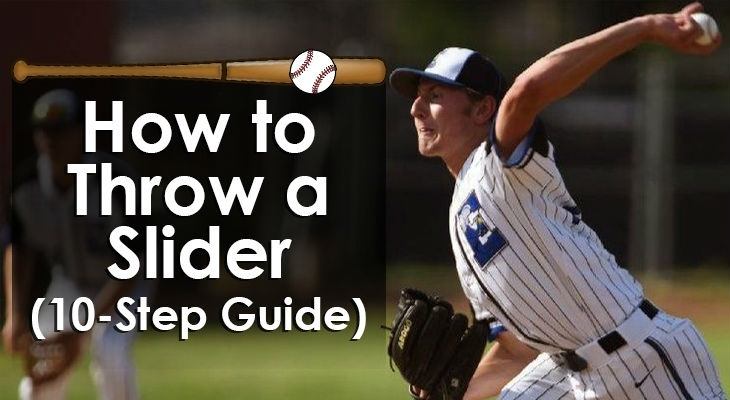
A slider can be an extremely effective breaking pitch.
It's thrown harder and has a sharper break than a curveball, but it's also one of the harder baseball pitches to learn how to throw.
To grip the pitch, first put your index and middle fingers tight together across one of the outer seams of the ball.
Then, place your thumb under the opposite seam, toward the inside of the ball. The closer your thumb is to those other two fingers, the more the pitch will drop off. The closer it is, the more it will slide.
Hold the ball so that the pressure is on the side of your index finger closest to your thumb. This will give you a hard grip on the outer third of the ball.
Finally, cock your wrist toward your throwing hand's thumb side to ensure you can release the ball properly.
When you release the ball, snap your wrist from up to down, which will cause the ball to drop as it reaches the plate.
5. The Knuckleball

A knuckleball is one of the most unpredictable pitches.
The ball doesn't spin like other baseball pitches, but rather glides and moves toward the plate.
With this pitch, you'll be gripping the ball with your knuckles instead of your fingers.
For a two-finger knuckleball, arch your middle and pointer fingers down. Then, put them right under one of the horseshoe seams of the ball.
Dig your fingernails into the middle of the seam, and grip the ball tightly. Your ring finger and thumb should be placed on opposite ends of the ball to provide stability.
For a three-finger knuckleball, simply add your ring finger to the top of the ball. Your pinky will now go to the side of the ball to provide extra stability.
For a four-finger knuckleball, your ring finger will come to the top of the ball, with your thumb providing the stability.
For all three types, you want your arm movement to be the same as that of a fastball.
When you go to release, though, you want to push the ball out from your fingertips instead of having it roll off your fingers. That's what will cause the unique motion of the ball.
>> Click here for my full post on throwing the "Knuckleball" <<
6. The Sinker
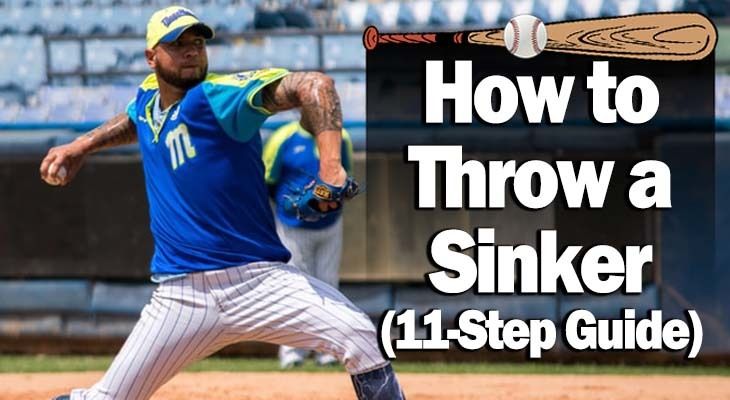
A sinker can be a devastating "out" pitch, as it dives hard toward the ground at the last minute.
This can cause a lot of swing-and-missed or lightly-hit groundballs.
To grip it, wrap your index finger along the seam that's closest to your finger (right seam for right-handed pitchers, for example).
Put your middle finger toward the middle of the ball. It'll be next to your index finger and will hook around the ball.
Your thumb will be on the bottom of the ball to help you get a firm grip. It should line up vertically with your index finger.
Your arm motion when throwing should be "over the top."
Bring your arm up high and then down as you release it. Put the pressure on the ball with your middle finger, and then twist your hand as you're releasing.
This will give it the late downward motion.
7. The Screwball
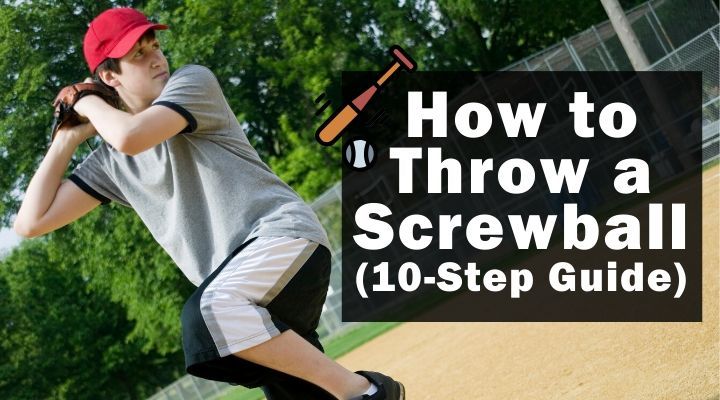
A screwball is confusing because it takes the opposite trajectory to the plate as other breaking pitches. Instead of it going away from same-handed hitters, it'll go toward them.
For example, a curveball from a right-handed pitcher will go away from a right-handed batter. A screwball, by contrast, will go in toward them.
To grip it, put your middle and pointer fingers at the top of the ball. Your pointer should be to the inside of the inner seam, with your middle finger an inch or so away. Put your thumb at the bottom of the ball for stability.
As you deliver, bring your arm down in an arching direction but tight to your body. When you release, you'll rotate both your forearm and your wrist.
Keep your knuckles pointed in toward your body, and rotate your wrist counterclockwise if you're right-handed and clockwise if you're left-handed.
>> Click here for my full post on throwing the "Screwball" <<
8. The Forkball
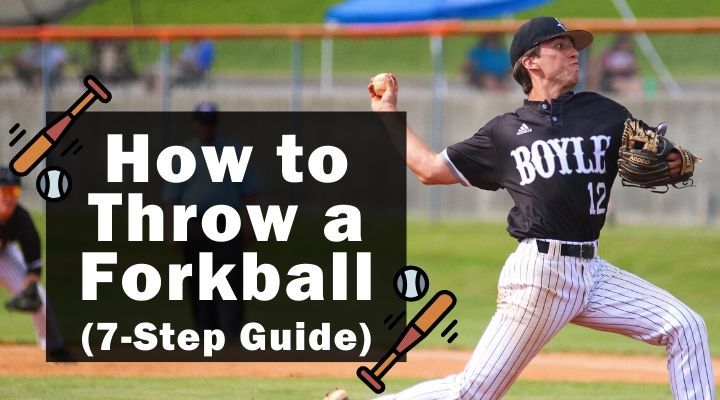
A forkball is similar to a four-finger fastball, but it's thrown slower and has a nastier downward spin to it. This makes it a very devastating pitch. It is hard to master, though.
To grip it, start with a two-seam fastball grip. Then, spread out your index and middle finger really wide.
Both of these fingers should land outside of the seams when you're done. Press the inside of these fingers against the outside seam on their side of the ball.
Your thumb should be bent and under the bill, acting as support for the ball. Then, grip the ball tight.
This is much different from other baseball pitches, where you want a lighter grip. The ball should be pressed firmly back between your index and middle fingers.
During your delivery, you should be operating as if you're throwing a fastball. When you release, snap your wrist down just as the ball leaves your hand. This will give it the nasty dive down. It will create the necessary topspin on the ball.
>> Click here for my full post on throwing the "Forkball" <<
9. The Slurve
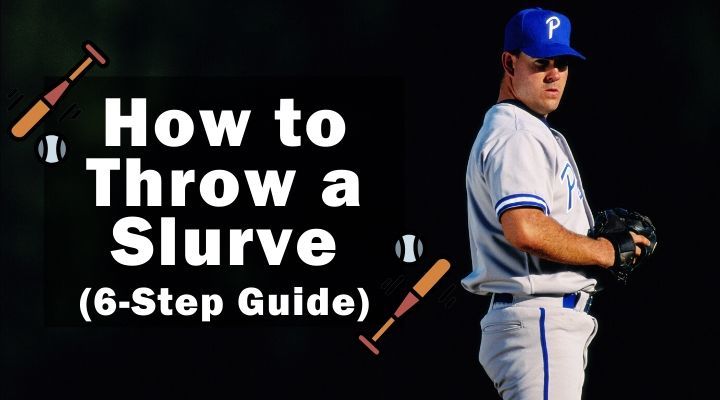
A slurve is a combination of the slider and curveball.
It has some of the similar motion of the two pitches, and has become more popular in recent years.
To grip it, put your middle finger on the ball first, on the right seam of the ball. Then, put your index finger right next to it, and make sure the two fingers are touching.
Bend your other two fingers and put them on the side of the ball. You shouldn't put too much pressure on the ball with them, though.
Finally, put your thumb on the lower side of the ball and on the left seam. Your thumb should be straight, not bent.
You want to throw a slurve out of a three-fourths arm motion, just like a fastball or slider. Right before you release, your hand should be facing outward, with your palm facing homeplate.
When you release, snap your wrist to create a downward break on the ball. Your wrist should snap down, with the back of your hand ending up being turned toward the plate.
10. The Cutter

A cutter, or cut-fastball, is a slight variation on the traditional fastball.
It's similar to a curveball, but doesn't have the same severe break on it.
The movement on a cutter is much later than a curveball, too. This makes it a nice pitch to add to the repertoire.
You want to grip the cutter just like you would a two-seam fastball. The adjustment comes with the other three fingers.
You can either put your other two fingers so the seam runs directly in between them, or your middle finger can run along the seam. Choose the position that's most comfortable to you.
Finally, slide your thumb out so it would form a circle with your index and middle fingers if those fingers were extended in the same direction. Your thumb should be roughly at the 4:00 or 5:00 position.
Turn your wrist slightly toward your thumb. Then, let your middle finger "lead" by putting extra pressure on the ball there.
Throw the cutter just like a fastball. Just as you're about to release, though, snap your wrist down hard, just as you would with a fastball.
If you make sure to keep extra pressure on that middle finger, though, it'll create that late movement you want.
11. The Splitter

A splitter, or split-finger fastball, is an "out" pitch that many hard-throwing pitchers use.
It basically "drops off the table," as they say, as the ball reaches the plate. It starts looking like a fastball but then ends up near the ground if thrown properly.
Start your grip the same as you would for a fastball. Then, spread out your middle and pointer fingers so they split the seam of the ball. Each finger should be on top of the seam on the outer side of the ball.
As you grip, make sure to keep your wrist stiff. This will help you create the topspin necessary to throw a splitter instead of a fastball.
At the same time, make sure you're gripping the ball loose.
Keep your elbow high, above your shoulder, as you're delivering your pitch. You want to release the ball once your hand is out in front of your body.
Release too early and the pitch will go too high. Release too late and it'll fall way short of the plate.
>> Click here for my full post on throwing the "Splitter" <<

